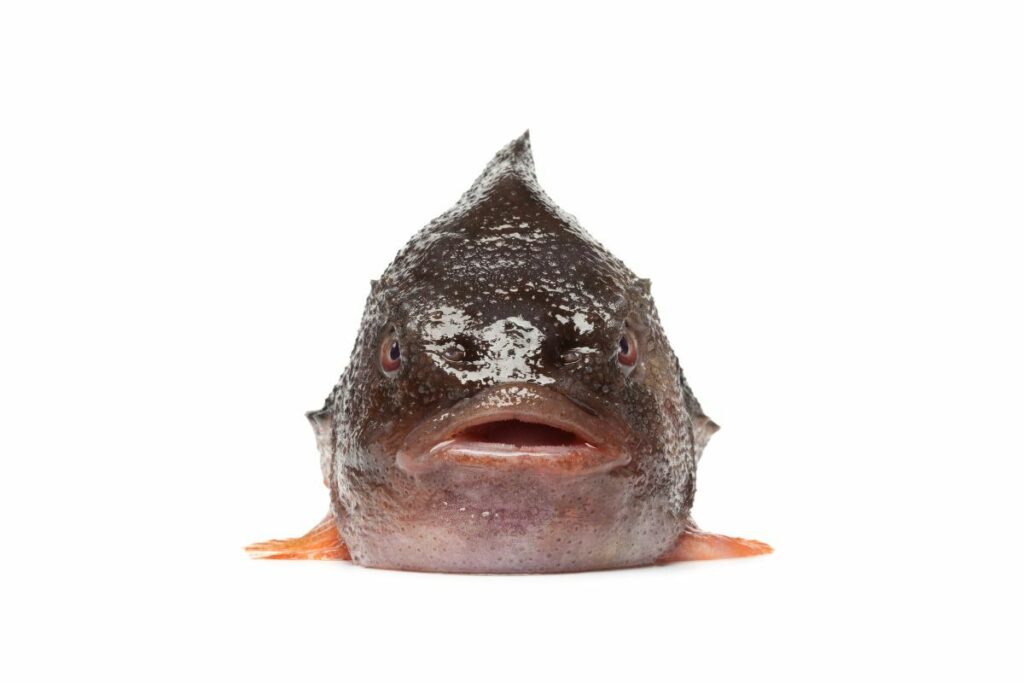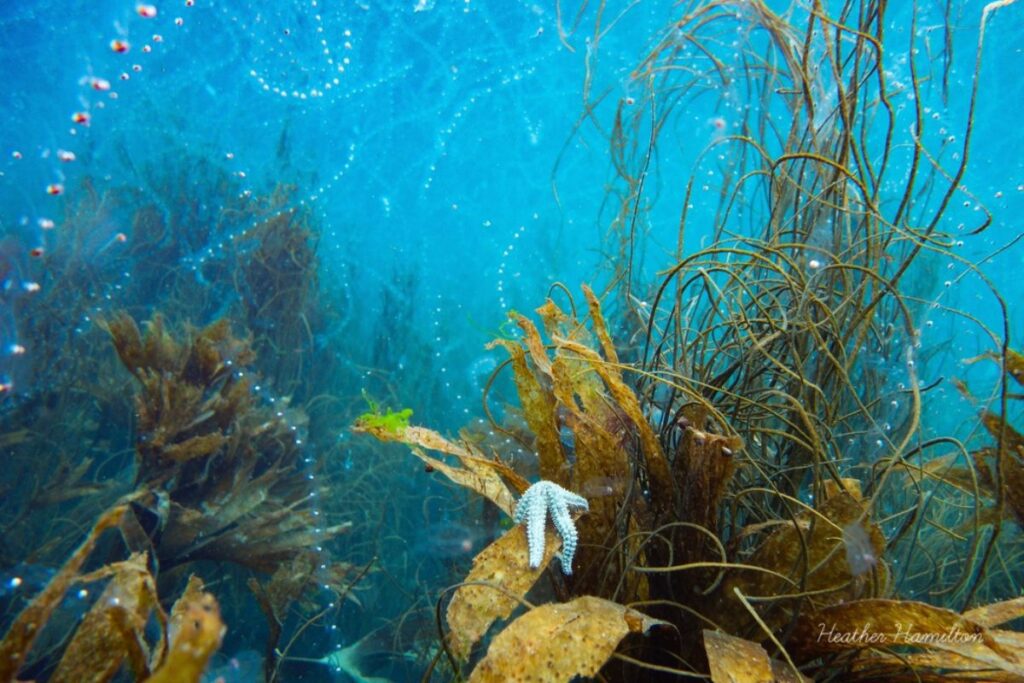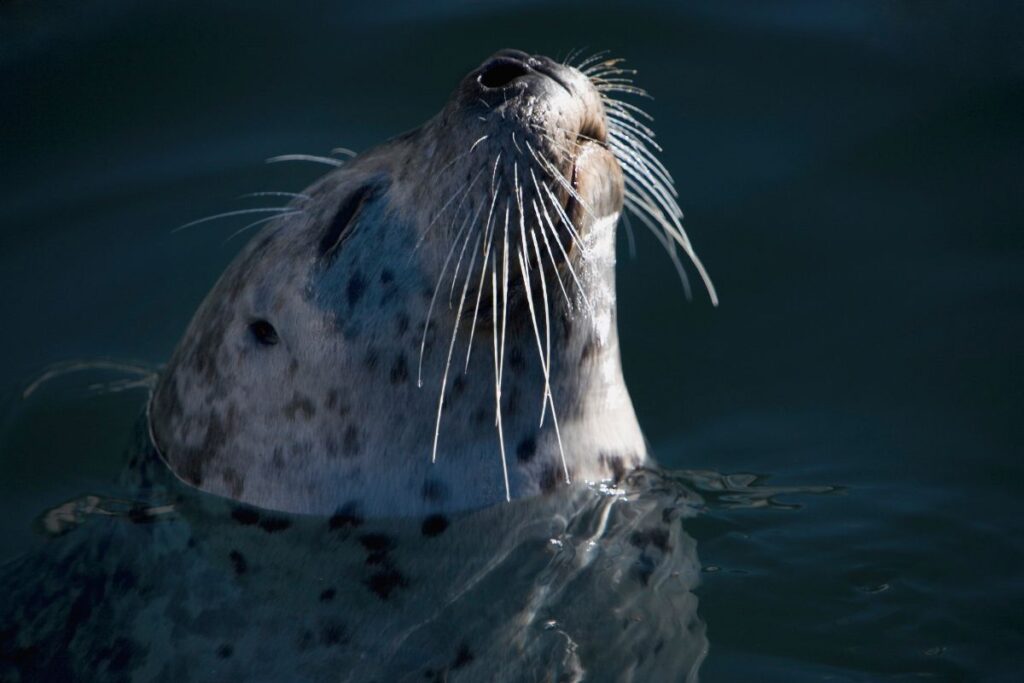“It doesn’t decay, you know, it’s wonderful.”
Sir David Attenborough recalls his headmaster making this haunting statement over 80 years ago. He was referring to plastic.
There’s no doubt that plastic was innovative at the time, but everyone failed to see that our love for it would lead to a rise of cheap products and a throwaway culture that now leaves us with a major environmental crisis, particularly regarding our seas and waterways. And no one predicted the effects this plastic pollution would have on our marine life.
Every year, around 12.7 million tonnes of plastic enters our seas. Every minute, in fact, one refuse truckload of plastic is dumped in our oceans. If these rates continue, experts predict that by 2050 there will be more plastic in our seas than fish.
And, as the headmaster stated over 80 years ago, plastic doesn’t degrade or decay, and it certainly won’t disappear. It just accumulates. Taking over our seas and killing our marine life.
Where does plastic pollution come from?

Plastic pollution from our rubbish and waste
One of the biggest sources of plastic in our seas is simply littering. Rubbish left on the beach after a day out, refuse fly-tipped in our rivers and waste blown in from our streets – all contribute to a massive problem.
A lot of this rubbish comes from single-use plastics. Straws, bottles, bags, crisp packets, stirrers, coffee cups, yoghurt pots – the list goes on. A huge proportion of our waste comes from plastics that we use just once and then throw it away. Sometimes we put it in the bin, but sometimes we don’t, and it works its way into our seas. These single-use items are also notoriously hard to recycle.
Take a coffee cup for example. We throw away an estimated 2.5 billion takeaway coffee cups each year. A lot of people think that these paper-looking cups are recyclable. But the plastic inner which makes them heatproof and watertight is often bound to the paper outer in such a way that it can’t be recycled. If you know you are going to grab a takeaway why not bring a reusable cup with you? Or if you have 5 minutes drink it in the shop in a ceramic coffee cup.
Have you heard of the Leave No Trace movement?
The Leave No Trace movement is all about enjoying the outdoors while minimising your impact on the environment, and cleaning up your rubbish after you leave a picnic in the park or day on the beach. One of the key principles of the movement is to protect our natural environments and avoid littering with single-use plastics. Straws, bottles, bags, crisp packets, stirrers, coffee cups, and yoghurt pots are just a few examples of the kinds of single-use plastics that can end up as litter. This litter can be harmful to wildlife and negatively impact the appearance of natural areas. We need to reduce the amount of plastic debris in our environment and leave a cleaner world for future generations to enjoy.
The Great Pacific Garbage Patch
There’s now so much rubbish in our seas that it’s clumping together to form vast floating garbage patches all over the world. Take the Great Pacific Garbage Patch (GPGP) for example. This floating mass of waste between Hawaii and California is the world’s largest and contains around 80,000 tonnes of plastic, or 500 jumbo jets worth.
Plastic pollution from our rivers
80% of plastic rubbish flows into the sea from our rivers. According to a recent report from Earthwatch Europe and Plastic Oceans UK, plastic drinks bottles were the biggest offender, representing a whopping 14% of the identifiable plastic waste in the European freshwaters. Food wrappers and takeaway cups were also particularly prevalent, with 12% and 6% respectively. All of these are single-use and non-recyclable.
Plastic pollution from our sewage system
Plastic waste also enters our seas from our sewage system. Plastic-stemmed cotton buds and disposable wet wipes are flushed in vast quantities every day, wreaking havoc on our sewers, polluting our oceans and harming our marine life.
Microplastics are also a major polluter. These tiny pieces of plastic measure less than five millimeters long and are very difficult to filter. They enter our waterways from things like facial scrubs and even synthetic clothing that shed fibres in the washing machine. A single clothes wash can release up to 700,000 microplastic fibres!
Plastic pollution from the fishing industry
Debris from the fishing industry, known as ghost gear, is also a major source of plastic pollution in our seas. Things like abandoned nets are a major hazard for marine life, causing a reported 3,200 incidences of damage to wildlife last year in England and Wales. At Padstow Sealife Safari’s our team is extremely concerned about the increase in ghost gear in our waters, if we see any animals in distress we will report the sighting to the relevant authorities or help out where we can. We also encourage our team to pick up any floating debris if it is safe to do so.
How does plastic pollution affect marine life?

Plastic pollution causes devastating wounds to wildlife
According to a recent report from the RSPCA, plastic waste caused 579 cases of harm to wildlife in 2018 in England and Wales alone, up from 473 in 2015.
The biggest cause of damage to wildlife is physical wounds or entrapment from plastic waste. Fish and marine birds becoming entangled in plastic packaging from things like plastic bags and plastic drink rings. This can cause painful wounds, strangulation or even drowning. Birds, mammals, and reptiles that live in the sea, but still need air to breathe, can become so entangled that they cannot surface for oxygen, and they drown.
There have been a number of heart-wrenching viral videos and images showing the devastating wounds some marine life suffer as a result of pollution in our oceans. Who can forget the tear-jerking video’s of the sea turtles wrapped in plastic or with a straw stuck up their nose, the whale shark trapped in a commercial fishing line or the tiny seahorse holding a cotton bud.
While this content may be heartbreaking to watch, its communication goes a long way to raise awareness of this worldwide problem. If you are interested in learning more about how to clean up our oceans to protect our wildlife, Surfers Against Sewage has a fantastic resource of local information on plastic pollution.
Plastic is mistaken for food
The other major danger of plastic in our seas is that it’s often mistaken for food and eaten by marine life. These unsuspecting creatures consume the plastic, which can choke them, cause internal injuries or slowly starve them to death.
A recent BBC documentary, “Drowning in Plastic”, told us the story of the shearwater colonies off the coast of Australia and New Zealand.
Shearwaters eat more plastic than any other mammal and are starving themselves to death. They often unknowingly feed fragments of plastic to their young, filling their stomachs and leaving no room for food. The fledglings then don’t get the nutrition they need and can’t fend for themselves when they head out to sea.
In order to save these birds, biologists have been capturing their young and flushing out their stomachs with seawater. Scientists claim to have taken up to 250 pieces of plastic out of a single bird.
And this is just one story.
Microplastics in our food chain
A million tonnes of tiny microplastic enter our seas as small plastics like microbeads from cosmetics or fibres from synthetic clothing. But they can also be created at sea as the elements break down larger plastic items. Think of how many tiny pieces of plastic can be made from one plastic bag!
Scientists are starting to find microplastics in our food chain. A recent study from Plymouth University, examined 504 fish caught off the coast of South West England and found one third contained microplastics. In sea birds alone, microplastics have been found to disrupt iron absorption of the small intestine and put stress on the liver.
What are Nurdles?
Nurdles are small plastic pellets made for plastic production, typically measuring around 3-5mm in length and looking somewhat like lentils (hence their other common name of “mermaid tears”). They’re the raw material of plastic and are used in the manufacture of pretty much every type of plastic product you can think of, from carrier bags to food packaging, toys, detergent bottles and more.
They’re also a major source of marine pollution with millions pouring into our ocean every year. Nurdles that have been spilt or lost during transport often end up in our waterways, where they’re mistaken for food by marine wildlife and can cause serious harm. Once nurdles enter the marine environment, they can persist for decades, breaking down into smaller and smaller pieces but never fully disappearing.
The production of nurdles also has a significant impact on climate change. The majority are made from crude oil, which is a non-renewable resource, and the process of turning them into finished plastic products requires large amounts of energy and generates harmful emissions.
So what can be done about nurdles? Well, firstly we need to try to avoid using them wherever possible. That means choosing products made from recycled plastics instead of virgin nurdles and avoiding single-use plastics to protect our marine animals.
Plastic kills coral reefs
Plastic pollution around the world has been found to kill our ocean’s coral reefs, which are an essential part of our ocean’s ecosystems and home to thousands of species. Plastics carry bacteria, and they block light and oxygen from getting into the coral. Coral that has come into contact with plastic is 89% more likely to become diseased.
The long-term effects of plastic on the ocean
As mentioned, plastic does not degrade. It lasts forever – although it gets smaller and potentially, more deadly over time. A recent social media post went viral when it showed a Mars Bar wrapper from 1986 found on Constantine Bay in our beloved Cornwall. An overwhelming number of people commented with similar stories of ancient plastic waste found on our marine environments, such as beaches and land based environments such as forests.

If we keep going the way we are, there will be more plastic in our seas than fish. What will this mean for our ecosystem? Our food chain? Our lifestyle? Our health?
No one knows.
A study last year uncovered microplastics in human stools for the first time. And microplastics have also been found in 83% of drinking water, so plastics are entering the food chain. Scientists don’t know yet what impact these plastics will have on human health, but it’s been suggested that they could affect our immune response or absorption of toxic chemicals.
What can we do to help with plastic pollution?
With human consumption increasing every day it is hard to imagine a world where we don’t consume single-use plastics daily. However, research for plastic alternatives is making strides and the increase in circular economy principles being applied to our products means hopefully fewer plastics will be released into our oceans and more will be put back into manufacturing and made into something else.
Reduce, recycle, reuse
Nowadays we are much better at recycling than we used to be. But we simply have too much plastic waste to recycle it all. We’ve such a large volume of plastic waste that we have to export around 600,000 tonnes of it to other countries each year. This then causes waste issues in destination countries like China and Malaysia. In fact, China now refuses to accept any more of our plastic waste.
So as well as recycling, we need to decrease the amount of waste we create, by reducing and reusing where possible.
The dreaded single-use plastics that appear so prominently in our waterways are a major area where we can improve. Choosing reusable coffee cups and drink bottles is an easy way to tackle single-use plastics. And although the plastic bag charge that was introduced in 2015 has reduced the number we use, you could take it a step further by bringing reusable canvas or straw bags, rather than the heavy-duty plastic-based options.
Another way to reduce single-use plastic is to go for loose fruits and vegetables at the supermarket, rather than those pre-packed in plastic bags. Many supermarkets and local shops are beginning to offer more bagless options. Morrison claims that their plastic-free fruit and veg initiative alone will save 156 tonnes of plastic a year. And there is an increasing number of zero-waste shops popping up, like Cornwall’s Incredible Bulk, which sells loose, packaging-free food and home products. You simply bring your own reusable containers.
The government is supporting the initiative to reduce single-use plastic too by banning some of the big offending items. From April 2020, single-use plastic straws, drink stirrers, and cotton buds will be banned. Paper alternatives are available, but why not try to go without?

Beach cleans
As well as doing the 3 Rs and better waste management, you could participate in a beach clean to directly remove litter from our coastal and marine environments. There are a number of regularly organised events around the country, where volunteers get together to pick up litter and plastic from our beaches. This year we participated in “Love Your Beach Day” on Valentine’s Day in Cornwall and were shocked at how much plastic we picked up.
Or why not do your own #2minutebeachclean? Martin Dorey and Tab Parry’s 2-minute movement has raised massive awareness for beach cleans across social media, and their beach cleaning stations (which include bags and grabbers) are located on beaches across the country for you to take advantage of.
5 organisations leading the way to a better world with less plastic waste
Given the urgency and importance of reducing our plastic waste, there are a growing number of charities and organisations that are leading the way to reduce our plastic and improve our oceans. If you’d like to know more about what to do or how to help, they’re a great place to start:
- Surfers Against Sewage – One of the UK’s leading environmental charities. They’re dedicated to the protection of the ocean, beaches, and wildlife. They educate, fundraise and organise events across the country to promote the preservation of our seas.
- #2minutebeachclean – A registered charity that is devoted to cleaning up our planet 2 minutes at a time. They believe that simple, achievable acts can add up to make a great difference
- Padstow Plastic Free Initiative – is an organisation inspired by the Fairtrade movement which aims for Padstow and its surrounding shores to become one of the first ever Plastic Free Coastlines.
- Beach Guardian – A Community Interest Company based in Cornwall that promotes, organises and educates people about beach cleans, reducing waste and tackling pollution in our seas.
- WWF – A leading conservation organization that works to protect the world’s wildlife and wild places. As part of its efforts to tackle the global problem of plastic pollution, the WWF has launched a new campaign to raise awareness of the issue and encourage people to take action.
The future of our marine life
There’s no doubt that plastic is having a devastating effect on our marine life. And who knows what that will mean for the future of our planet. Thankfully we are starting to change and there are some initiatives that are helping us improve our plastic-based culture. But we’ve still got a long way to go. Are your kids interested in nature, climate change and marine conservation? Check out our 6 Top Conservation Tips for Kids.
The future of our marine life is in our hands. Will you help save it?
Find out more about the endangered sea life in the UK.
If you think we’ve missed something off our list please let us know! We are always excited to learn about new innovative ways to protect our environment!
Sources:
https://earthwatch.org.uk/images/plastic/PlasticRiversReport.pdf
https://www.theguardian.com/environment/2019/feb/04/animals-birds-plastic-waste-rspca
FAQs
Why is plastic dangerous for marine life?
Marine animals often mistake plastic debris for food, leading to ingestion and blockage of digestive systems, exposure to toxic substances and even potential starvation. Additionally, plastics in the ocean can entangle wildlife, leading to injuries or death.
How much plastic is in the ocean?
It was estimated that about 8 million metric tons of plastic enter the oceans every year. The total amount of plastic currently in the oceans is much harder to quantify precisely, but it’s believed to be in the range of hundreds of millions of metric tons.
What are 3 harmful effects of plastics?
Wildlife Harm: Plastics can be ingested by wildlife, leading to injury or death.
Environmental Pollution: They contribute to long-lasting pollution as chemicals in plastics can leach out into the water.
Human Health Risks: Chemicals from plastics bioaccumulate up the food chain, which when ingested by humans can potentially cause health issues.
How much marine life is killed by plastic?
Accurately quantifying the number of marine life killed by plastic is challenging due to the vastness of the oceans and the variety of ways in which plastics can cause harm. However, it is widely acknowledged that thousands of marine animals, including seabirds, fish, turtles, and mammals, die each year due to plastic pollution.



